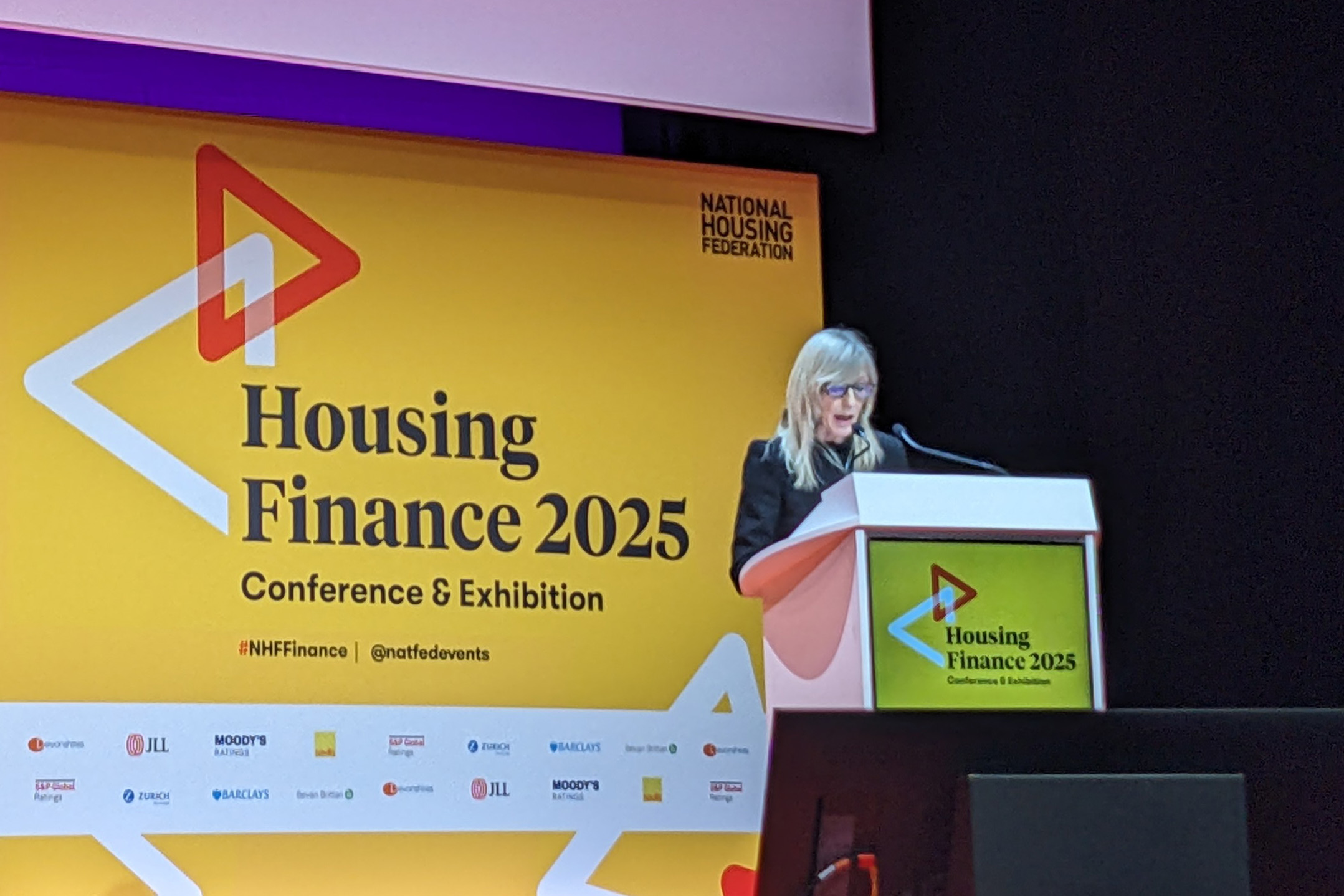Devolution and housing in England – where are we now?
As the Labour government firms up plans for its next set of devolution deals, Social Housing looks at what settlements to date have meant for housing, and what is needed to do more. Robyn Wilson reports
After fewer than two weeks in office, Angela Rayner, the housing secretary, set out plans to devolve more housing powers in the “most ambitious programme of devolution this country has ever seen”.
Her party had been elected on a manifesto to “widen and deepen devolution across the country”, she wrote in a letter to local leaders in July, with a devolution framework setting out new powers and flexibilities available to local leaders to be revealed in “due course”.
It followed calls from organisations such as the Institute for Government to “complete the job of English devolution to 85 per cent” of the country by the end of the next parliament. The thinktank’s research showed devolution currently only covers 48 per cent of England’s population, 54 per cent of its economic output and 26 per cent of the land area.
With the secretary of state inviting proposals from local leaders by the end of September to participate in her government’s first set of devolution settlements, announcements are imminent. So, where are we with devolution, what are some of the lessons when it comes to devolved housing delivery and what challenges stand in the way?
Devolution so far
This November will mark 10 years since the first devolution deal with Greater Manchester was announced (excluding the Greater London Authority Act, which passed in 1999). Since then, the government has negotiated bespoke deals with combined authorities, which are legal bodies made up of two or more councils. They can be formed with or without a mayor, with devolution deals also possible without a combined authority structure, such as that struck with non-mayoral Cornwall Council in 2015.
There are currently 12 areas with mayoral devolution in England: Greater London, the West Midlands, Greater Manchester, Liverpool City Region, West Yorkshire, South Yorkshire, Cambridgeshire and Peterborough, Tees Valley, the West of England, York and North Yorkshire, the East Midlands, and the North East. Completed deals vary in the level of power devolved, with four levels available. The more expansive powers are only on offer to combined authorities that adopt mayoral leadership.
Plans to extend mayoral devolution to a further four places – Suffolk, Norfolk, Greater Lincolnshire, and Hull and East Yorkshire – were expected in 2025. But earlier this month (September), the government scrapped plans to give Norfolk and Suffolk greater powers, saying the deals agreed with the previous government were not ambitious enough. Under the original plans, powers would have been devolved directly to these county councils rather than a combined authority.
Commenting on the decision, a Ministry of Housing, Communities and Local Government spokesperson reiterated the government’s commitment to devolution.
“Devolution is central to the government’s mission of economic growth, which is why we’ve set out plans to take power away from Westminster and [put it] into the hands of local leaders – who know their area best,” they said.
“This government strongly believes that mayors should have a unique role, while council leaders must continue to focus on the delivery of the essential services. We want to see those two functions kept separate, as this benefits the community and its people, which is why we will not be proceeding with the single local authority mayoral deals proposed in Norfolk and Suffolk. We intend to continue discussions with both areas on alternative models for ambitious devolution.”
Greater Manchester and West Midlands are two combined authorities that are further ahead in devolution. Both received new ‘trailblazer’ deals in March 2023, which effectively gave them greater powers in several policy areas, including transport, skills, housing and retrofitting.
On housing, this included more flexible funding for affordable housing and brownfield development, as well as funding to support the retrofitting of properties to improve their energy efficiency.
Success or failure?
The general consensus of people spoken to for this article is that devolution has been a success so far. However, all stressed that more needs to be done for regions to reap the full benefits, as Patrick Murray, executive director of policy and public affairs at the Northern Housing Consortium (NHC), says.
“Real progress has been made, particularly in setting up the mayoral combined authorities, but governments tend to get to devolution towards the end of their term,” he says, referencing the last Labour government’s local transformation initiative, Total Place, along with the Conservative government’s levelling up agenda. “So, it wasn’t high up the agenda.”
The reason for this depends on the government, Mr Murray says, although he noted a potential reluctance from governments to relinquish power once in office. “You’ve got to be quite brave politically to give away power that you hold, [and] you’ve got to be really confident the people you’re giving it to are going to do a better job.”
He adds: “But I do think the advent of the mayors gives a political focus that will stop backsliding from devolution, which is really positive. In terms of housing, [the regions] are all in different places, with some being more established than others, such as Manchester, which has been collaborating for years as a group of local authorities, whereas others are much earlier on in the journey, and that’s an important part of the context.”
This variance has been experienced by housing associations working with combined authorities to boost housing delivery, like the 17 united under Homes for the North, says Bronwen Rapley, the group’s chair.
“Our experience has varied between Greater Manchester, where there’s been significant devolution for a very long time and a really good partnership built, and some areas where we’re just starting to form partnerships, like in the North East and North Yorkshire,” she says.
“But in all of those, housing is on the agenda, with housing featuring in several mayoral ambitions and a real willingness to work together and address the issues we face.”
She says that partnerships between combined authorities and housing associations have been key, with both generally good at sharing learning via forums. “You’ve got combined housing associations within a regional grouping, and then through their regional grouping they’re working with the various combined authorities. That’s better for the combined authorities and is a lot more effective. And it’s better for us, too.”
What obstacles lie ahead?
As more deals are agreed, building up internal resources and knowledge was flagged as a challenge. However, funding is the major sticking point, with different rules, criteria and timelines attached to funding pots making some of the money earmarked for combined authorities unviable or unobtainable.
Richard Parker, mayor of the West Midlands Combined Authority (WMCA), says that the group currently has £148m in its housing funds that it is unable to use.
The funds in question are ringfenced, have pre-agreed housing targets and were originally devolved for the purpose of unlocking additional housing supply by bringing under-utilised brownfield land back into use. These funds were intended to tackle genuine viability gaps associated with site remediation, infrastructure deficits, repurposing existing buildings, site assembly and other enabling requirements.
This is where the challenge lies for the WMCA, which now has a target to deliver 20,000 new social homes. Social rent properties require a significant level of public sector subsidy to deliver. To date, this subsidy has been provided through the national Affordable Homes Programme, administered by Homes England, which was designed to address the cost of delivering affordable homes.
The delivery targets on the WMCA’s existing funds create a ceiling on the level of subsidy it can provide per home, which is reflective of the typical grant requirement to bring brownfield sites back into use at the time each fund was agreed. This level is substantially below the grant required to deliver a social rent home.
Mr Parker says: “The WMCA has been able to secure vital funding to invest in housing, focusing on regenerating old industrial sites that have long been eyesores and barriers for communities. This funding has been used to clean up these sites and help developers build homes, with a commitment that at least 20 per cent of them will be affordable for local people. So far, we’ve built more than 7,000 homes, with over a quarter of them affordable.
“But with the rising cost of construction and high interest rates, it’s been challenging to keep up with the demand for homes, especially for families who need social housing the most.
“Housebuilding in the West Midlands has doubled over the past decade, but we know it’s still not enough. Too many people are waiting too long for a safe, affordable place to call home. That’s why I’ve set a target to deliver 20,000 new social homes over the next decade. We have £148m sitting in our housing funds, but restrictions are stopping us from using that money to give families the homes they need.
“I’ve written to the deputy prime minister, because this issue is urgent. People are waiting, and we have the means to help them now.”
In the South, Eastbourne Borough Council is a two-tier authority with responsibility over housing that has not entered a devolution deal. Peter Diplock, the council’s cabinet member for housing and homelessness, says that central government funding previously came with “too many strings attached”.
“We’ve had a few examples where government has made funding pots available, but they’ve come with so many strings attached that it’s almost like there’s no point,” he says.
“Whereas [they should have] just made that money available and said, ‘Eastbourne Borough Council, you know your town better than we do in central Westminster, Whitehall. You know what this money could be best used for to solve your homelessness problem.’ But the theme of the last government was really tightly managed, discrete pots of money that you [either] had to compete for in the first place, or came with such stringent criteria that it was almost impossible to meet them.”
This issue around funding was echoed by the NHC’s Mr Murray. He says that the upcoming multi-year Spending Review in March was one to watch. “The proof of the pudding will be in the money. Money is tight and I wouldn’t expect a lot of budget, but this Spending Review will essentially set the envelope for the next parliament. And how that money works is going to be really critical, because what we’ve seen in the past is, even when there is money, the rules around it mean it doesn’t really tackle some of the challenges we’ve got, [particularly] in the North.”
One example of this can be found in the Brownfield Housing Fund, says Mr Murray, to which all combined authorities have access. The NHC published a report in August laying out the opportunities for greater devolved funding for brownfield development, which it said is hindered by Treasury value-for-money rules.
Mr Murray says: “The Treasury value-for-money rules mean you have to meet a certain threshold, and it’s all based on the land value uplift. If you’re based in the South East, the land value is so high that anything you do on it will generate enough money.
“Whereas if you’re in Bradford, where the land values are lower and the investment needed is higher because you’re having to deal with land with contamination [for example], it doesn’t stack up so you can fund it under the government rules.”
Devolution in focus: three cases of devolved housing delivery
Multiple partnerships to regenerate towns and cities
“Partnership work is vital if we’re to achieve our ambitions and address the decades of underinvestment in West Yorkshire,” Tracy Brabin, the mayor whose region has around 90,000 households on the council waiting list for housing, tells Social Housing.
In her first term, she set up the West Yorkshire Housing Partnership, which is made up of 15 social housing providers. So far, it has built more than 2,000 affordable homes, with plans under way to build 3,592 more.
Last year, the group also signed a “landmark” strategic place partnership with Homes England.
Ms Brabin says: “[This] has helped us to identify priority areas for housebuilding capable of unlocking capacity for 40,000 additional homes, and work up plans for greener, more secure communities.
“We’ve also recently developed our region’s first-ever housing strategy, with four key objectives to deliver more housing, more affordable housing, better-quality housing, and more vibrant communities that support our health and well-being and meet our net zero ambitions.”
Housing development across three sites in the West Midlands
To date, the West Midlands Combined Authority (WMCA) has used its devolved housing and land fund to regenerate brownfield sites, including the Cookley Works in Dudley, which it developed in collaboration with housing association Platform. An old steelworks site that had been derelict since 2007, landowner Tata Steel sold the site to house builder Lovell for £4.5m. The WMCA invested £1m to unlock the site for housing by cleaning up the land and making it suitable for redevelopment, with Lovell building the homes before passing the scheme on to Platform.
Similar successes across the region include a scheme in Walsall. The authority is developing its former Caparo steel works to deliver more than 250 homes (half of them affordable), following a £4.1m investment.
At Longbridge, the iconic West Works car factory site is being regenerated after two decades, with homes and a business park set to create thousands of jobs for local people.
Greater Manchester launches homelessness scheme and landlord charter
The most established of all the combined authorities, Greater Manchester has launched several initiatives over the years to improve its housing sector. This July, it revealed a package of measures, including plans to deliver 75,000 new homes over the course of the next parliament.
Andy Burnham, mayor of Greater Manchester, called on the new government to support the plans, which he said would be connected to an “integrated transport system”. He also confirmed plans for a new landlord charter, a voluntary scheme for landlords that want to commit to higher standards than they are currently required to by law. This is the first such scheme in the country open to all landlords and includes private and social landlords, big and small.
Elsewhere, the authority was one of a number of areas to roll out a housing pilot in 2019 called Housing First to tackle its homelessness problem. Inspired by a similar programme in Finland, the initiative works with a range of partners – from central government, housing associations and mental health organisations – to help find people housing and support. So far it has helped more than 400 people in the region.
Recent long reads from Social Housing
Waqar Ahmed’s parting request to the banking sector? ‘Take some more risk’
As he looks to step away from the financial helm of L&Q, 27 years after joining the group, Waqar Ahmed speaks to Sarah Williams about massive growth, major restructuring, Westminster’s “most stupid decision” and why the sector’s lenders must (finally) take on more risk
‘It was really the credit crunch that was our making’: Piers Williamson on two decades at THFC
After 22 years at the helm of sector bond aggregator The Housing Finance Corporation, Piers Williamson sits down with Sarah Williams to talk through two decades of turnaround, transactions and traversing market turbulence
‘It’s not something we would ordinarily do’: why the RSH made a payment to a failing provider
At the start of 2023, the English regulator exercised a power it had not used for more than two decades: it gave direct financial assistance to a struggling housing association by providing liquidity support. Sarah Williams reports
Devolution and housing in England – where are we now?
As the Labour government firms up plans for its next set of devolution deals, Social Housing looks at what settlements to date have meant for housing, and what is needed to do more. Robyn Wilson reports
Under the radar? Why housing providers need to talk about fraud
Data on the volume, types and cost of fraud to the social housing sector is hard to come by. Keith Cooper hears from providers and experts about why that matters – and what we do know about recent trends in fraudulent activity
Captive insurance: why more than 15 housing associations are exploring the approach
Michael Lloyd investigates what captive insurance entails and whether it could provide an answer to the sector’s challenges in this area, as Social Housing learns that at least 15 associations are exploring the approach
Sign up for Social Housing’s weekly news bulletin
Social Housing’s weekly news bulletin delivers the latest news and insight across finance and funding, regulation and governance, policy and strategy, straight to your inbox. Meanwhile, news alerts bring you the biggest stories as they land.
Already have an account? Click here to manage your newsletters.
RELATED












